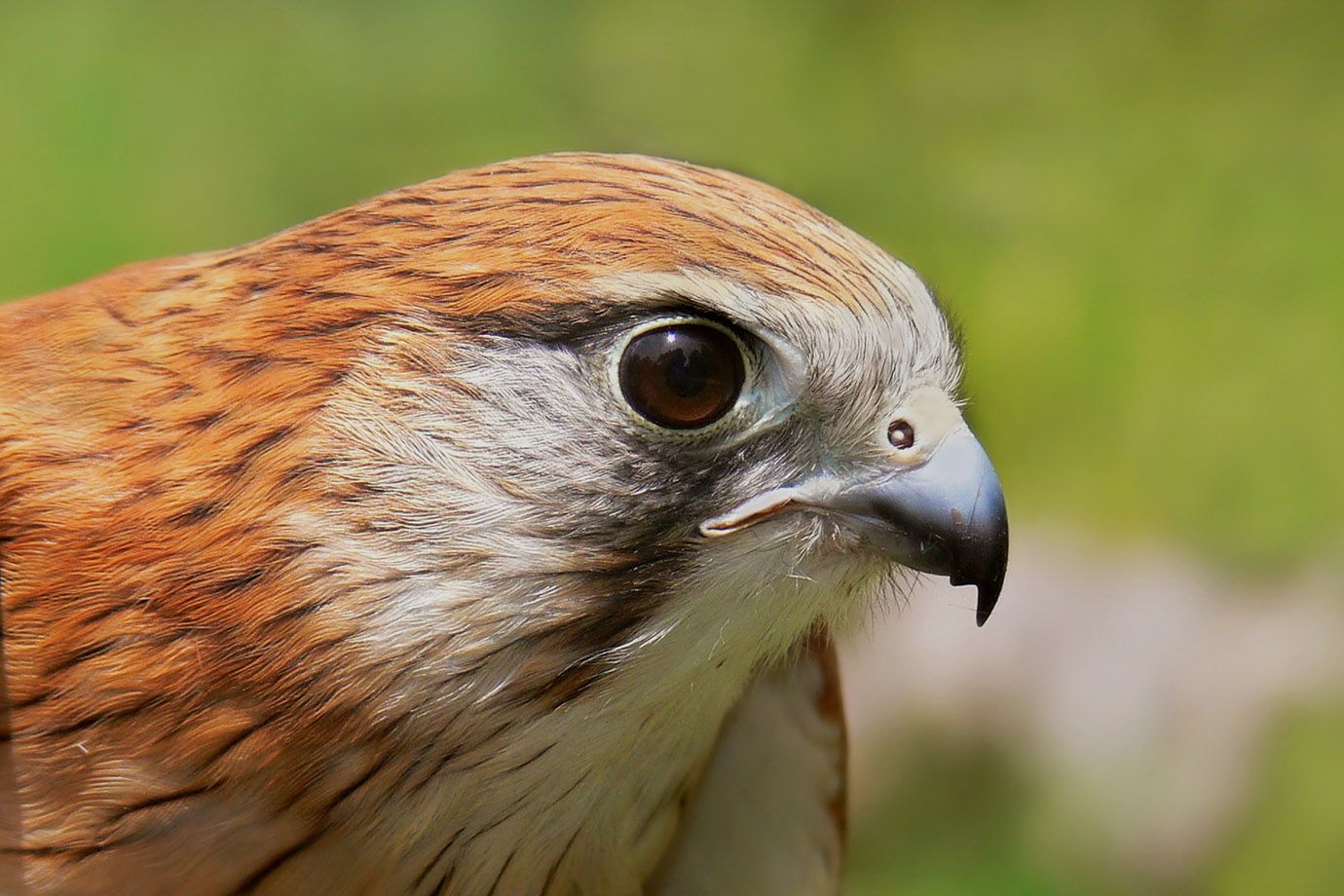
Australian Kestrel
The Australian Kestrel (Falco cenchroides) is one of the smallest falcons. This bird is thought to be a very close relative of the Common Kestrel, and probably also the Spotted Kestrel.
A very common and easily seen raptor, the Nankeen Kestrel is found in Australia, New Guinea, and nearby islands, and is an irregular visitor to New Zealand. It occupies any type of land that is not too densely vegetated, but in particular temperate grasslands and open woodlands. In the tropical north and the sandy deserts of the west, it has a patchy and seasonal distribution.
Typically seen singly or in pairs, they can aggregate into loose flocks of up to 30 when conditions are right. Pairs are typically monogamous and may or may not disperse to different areas during the non-breeding season. The nest is any convenient structure: a tree hollow, cliff ledge or disused corvid's nest, for example, and is not modified or added to by the kestrels. Three to seven eggs are laid in late winter (usually about four) and incubated by the female alone. Hatching takes place after 26 to 28 days, and the male brings food while the female continues to incubate until the young are close to fledging, at which time the female leaves the nest to hunt for them, too. Multiple broods are raised in good seasons.
Source: en.wikipedia.org/wiki/Nankeen_Kestrel - 20.11.2008
Australian Kestrel
On this close-up and on the picture in flight, too, a female Australian Kestrel is seen.








